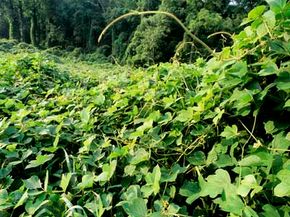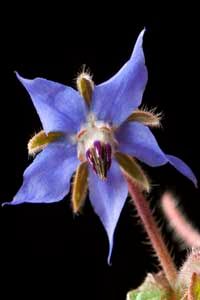In the Southern United States, leafy green kudzu vines have overtaken portions of the landscape with a vengeance. Given the right mix of moderate heat, sunlight and rainfall, kudzu will trample anything in its path, growing at an astonishing rate of one foot (30 centimeters) per day [source: USDA Forest Service]. When that happens, the kudzu envelops trees, bushes and buildings so thoroughly that it resembles sheets draped over furniture in an abandoned house.
Although kudzu has become a definitive feature of southern scenery, it hasn't always been around. The aggressive plant was introduced to the United States from Asia in the 1800s as a form of erosion control [source: USDA]. While its robust root system may help hold soil in place, its vines can extend up to 100 feet (30 meters) and smother any plants in their path. Kudzu has since slithered from the East Coast to the Midwest and is classified as an invasive non-native species.
Advertisement
The kudzu takeover is a prime example of a bioinvasion, in which a non-native plant enters an area and threatens the livelihood of other plants. Bioinvasion harms ecosystems because it disrupts the balance between the original flora in that space and the fauna that feeds on it and helps it proliferate. Today, for instance, an estimated 37 percent of Pennsylvania's total plant flora is non-native [source: Pennsylvania Department of Conservation and Natural Resources]. How do non-native plants move around in the first place? As in the case of kudzu, people may intentionally introduce a plant for a specific purpose. Then, once established, a plant can spread its seed via wind, insects or animals. Ships are another major vehicle for bioinvasion. Some ships transport remnants of plants in their cargo or in the thousands of gallons of water retained in their ballast tanks [source: Bright].
In an effort to mitigate the effects of bioinvasion and offset global climate change, landscaping with native plants has become more popular in the United States. Native plants generally include indigenous flora found in a geographic location prior to European settlement. But in addition to relieving some ecoanxiety, does native landscaping offer any benefits for the gardener?
Advertisement

